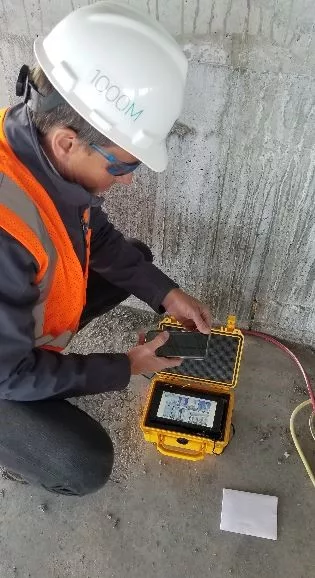Do you know that buildings of all sizes move in response to wind and earthquake events? This movement is slight and mostly imperceptible. However, you might notice swaying drapes and light fixtures or “squeaking” wall panels, especially during minor seismic tremors or storms generating winds of 50 miles per hour or more.
A building’s shape, structure, and damping can solve wind-related design problems like movement and force.
Managing and arresting these motions is central to the MKA design process. Our engineers understand when motions will likely arise and use prediction algorithms tested by hundreds of building-related wind tunnel evaluations to identify buildings susceptible to movement. If the design remains challenged, we consider the cost-versus-performance achieved via three options:

- Additional Structure: Stiffening or weight changes add structure to a building. Given the increased structural cost, this option is ideal for only a few projects.
- Aerodynamic Reshaping: While often yielding the greatest performance benefits, this option requires architectural changes to a building’s form—sharp corners are rounded, chamfered, or inset; balconies are shifted; open floors are introduced; and the porous nature of tower parapet screens are adjusted.
- Additional Damping: Dampers prevent a tower from vibrating indefinitely. All buildings have a certain amount of natural and inherent damping that converts building motion energy to harmless heat or other energy. When a building’s inherent (and free) damping is insufficient, engineers can add bespoke dampers.
What does additional damping look like? The MKA-designed World Trade Center in New York City used rubber dampers at the end connection of each open web floor joist. On windy days, the iconic twin towers successfully mobilized thousands of these miniature dampers to curb wind motion. Tuned mass dampers employ pendulums and feature prominently in towers such as New York City’s 432 Park and Taiwan’s Taipei 101.
Tuned sloshing dampers (so named because they typically involve water-filled tanks placed near rooftops) inhibit wind motion. (Read our innovation article, The Sloshing Solution, here.) MKA-designed towers such as Highcliff in Hong Kong, One Chicago and 150 North Riverside in Chicago, and Rainier Square in Seattle incorporate tuned sloshing dampers at prices more economical than other damping solutions.
Want to Learn More?
Solving tough wind problems does not mean all the walls need to be thicker. MKA is pleased to review, suggest, or advise architects and developers with wind management strategies. Please contact Russell Larsen, PE, SE, for further information.